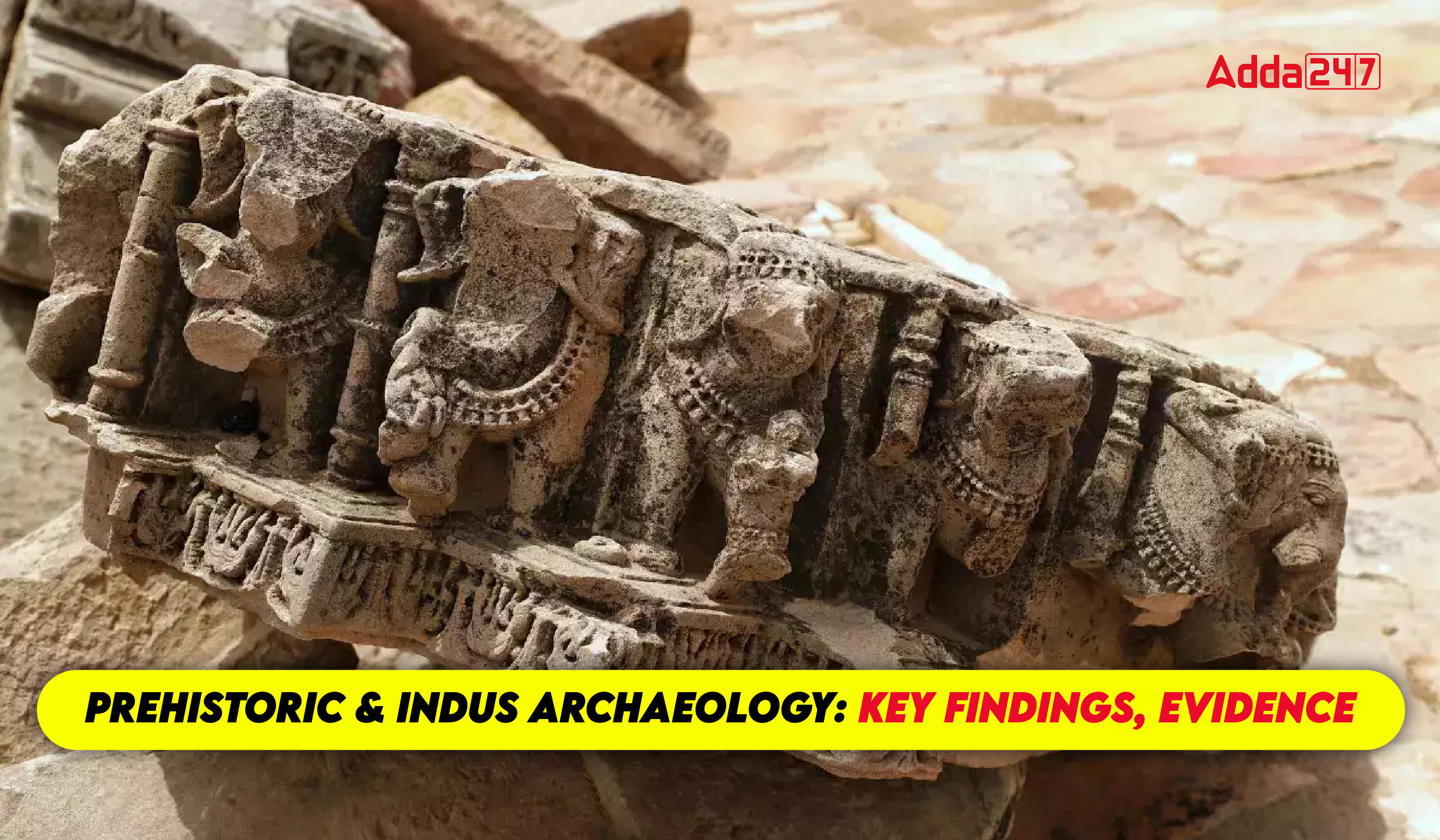Table of Contents
Among the four oldest civilizations in the world, the Indus Valley Civilization (IVC) is regarded as the largest. The Indus Valley Civilization began to develop between 2600 and 1900 BC, with its sites emerging on the banks of the Indus River around 3000 BC. It was a result of the Bronze Age and demonstrated a much more developed bronze-using culture.
Indus Valley Civilization
The main areas covered by the civilization were northern Uttar Pradesh, Gujarat, Rajasthan, Sindh, and Balochistan. The total area inhabited by humans was estimated to be 1.3 million square kilometers.
Harappa, the earliest site of the Indus Valley Civilization, was discovered in 1921 by the Archaeological Department of India. The civilization itself has been referred to as the Harappan Civilization ever since.
Some Indus Valley Civilization sites were found in the years that followed by different archaeologists. Moreover, since 1921, a great deal of artifacts representing the artistic sensibility and vivid imagination of the Indus Valley Civilization’s inhabitants have been discovered at these sites, including sculptures, jewelry, seals, pottery, and other items.
Indus Valley Civilization Key Locations
In several parts of India, Pakistan, and Afghanistan, more than a thousand Indus Valley Civilization sites have been discovered. The bulk of these thousand-year-old civilization’s sites are located in India. Let’s go over each of the main Indus Valley Civilization sites individually. The Indus Valley Civilization consists of seven significant sites.
- Harappa
- Mohanjodaro
- The Kalibangan
- Lothal
- Chanudharu
- Dholavira
- Banawali
These are described in more depth below.
| Sites with Archaeological Findings | |||
| Site | Description | Location | Archaeological Findings |
| Harappa |
|
It is situated on the banks of the Ravi River in the West Punjabi district of Sahiwal. |
|
| Mohenjodaro |
|
It is situated on the banks of the Indus River in the Sindh (Pakistan) district of Larkana. |
|
| Sutkagendor |
|
The location of this Harappan site is on the banks of the East River in the Makran district of Balochistan, Pakistan. |
|
| Chanhudaro |
|
Situated on the banks of the Indus River, this location is in Sindh (Pakistan)’s Nawabshah district. It’s 80 miles to the south of Mohenjo Daro. |
|
| Lothal |
|
|
|
| Kalibangan |
|
|
|
| Surkotada |
|
Situated on the banks of the Shadi Kaur river, it is in Gujarat’s Kutch area. |
|
| Dholavira | R.S. Bisht excavated Dholavira in 1985, following its first discovery in 1967. It is among the biggest Indus Valley Civilization sites. | It is situated in Gujarat’s Kutch district. |
|
| Banawali |
|
It is situated in Haryana’s Fatehabad district. About 120 kilometers northeast of Kalibangan, it is situated |
|
Indus Valley Civilization Other Sites
To gain a deeper understanding of human societies, archaeology relies on the interpretation of data and discoveries made during excavation. The list of prehistoric and Indus Valley Civilization archaeological finds and evidence that we are providing here is quite helpful in getting ready for competitive exams. Here are a few more well-known Indus Valley Civilization locations:
| Other Sites of IVC | |
|---|---|
| Site | Location |
| Amri | Dadu district, Sindh, Pakistan |
| Alamgirpur | Meerut district, Uttar Pradesh, India |
| Balu | Kaithal district, Haryana, India |
| Balathal | Udaipur district, Rajasthan, India |
| Daimabad | Ahmednagar district, Maharashtra, India |
| Desalpur | Kutch district, Gujarat, India |
| Ganeriwala | West Punjab, Pakistan |
| Karanpura | Hanumangarh district, Rajasthan, India |
| Kunal | Fatehabad district, Haryana, India |
| Kot Diji | Khairpur district, Sindh, Pakistan |
| Kot Bala | Lasbela district, Balochistan, Pakistan |
| Mehrgarh | Kachi district, Balochistan, Pakistan |
| Mandi | Muzaffarnagar district, Uttar Pradesh, India |
| Pabumath | Kutch district, Gujarat, India |
| Rangpur | Ahmedabad district, Gujarat, India |
| Ropar | Rupnagar district, Punjab, India |
| Sanauli | Baghpat district, Uttar Pradesh |



 Bishnoi Movement - History, Objective, a...
Bishnoi Movement - History, Objective, a...
 Neolithic Age- Agriculture, Tools, Potte...
Neolithic Age- Agriculture, Tools, Potte...
 Position of Women in Vedic Age: Societie...
Position of Women in Vedic Age: Societie...




